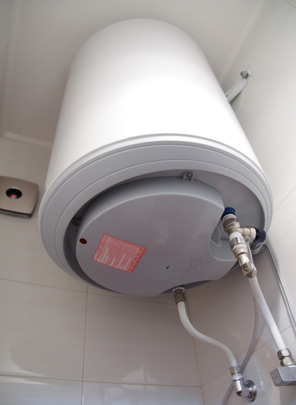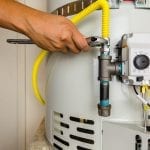Best Practices for Caring for Your Home's Hot Water System
Best Practices for Caring for Your Home's Hot Water System
Blog Article
Are you trying to find tips about Tips on Maintaining a Water Heater?

Warm water is necessary for day-to-day convenience, whether it's for a revitalizing shower or washing recipes. To ensure your hot water system runs efficiently and lasts longer, routine upkeep is crucial. This article gives functional ideas and insights on just how to preserve your home's hot water system to stay clear of interruptions and expensive fixings.
Intro
Preserving your home's hot water system may seem difficult, yet with a few simple actions, you can ensure it operates efficiently for many years to come. This overview covers everything from recognizing your hot water system to do it yourself upkeep suggestions and recognizing when to employ professional aid.
Significance of Keeping Your Warm Water System
Routine maintenance not just expands the life expectancy of your warm water system but also guarantees it runs efficiently. Ignoring maintenance can result in lowered effectiveness, greater power costs, and even early failing of the system.
Signs Your Warm Water System Demands Upkeep
Knowing when your hot water system requires focus can avoid significant issues. Watch out for signs such as irregular water temperature level, strange sounds from the heating system, or rusty water.
Comprehending Your Hot Water System
Before diving right into upkeep jobs, it's useful to comprehend the standard components of your warm water system. Typically, this includes the water heater itself, pipes, anode poles, and temperature level controls.
Month-to-month Upkeep Tasks
Routine regular monthly checks can aid capture small issues before they escalate.
Purging the Hot Water Heater
Flushing your hot water heater removes sediment accumulation, enhancing performance and prolonging its life.
Checking and Replacing Anode Rods
Anode poles stop rust inside the storage tank. Evaluating and replacing them when worn out is important.
Examining and Adjusting Temperature Setups
Readjusting the temperature level setups ensures optimal performance and safety and security.
DIY Tips for Upkeep
You can do several maintenance tasks on your own to maintain your hot water system in leading condition.
Looking for Leaks
On a regular basis inspect pipes and links for leaks, as these can result in water damage and greater bills.
Evaluating Stress Alleviation Valves
Checking the pressure safety valve ensures it operates properly and prevents too much stress build-up.
Shielding Pipes
Insulating hot water pipelines reduces warm loss and can save power.
When to Call a Professional
While DIY upkeep is helpful, some problems need professional proficiency.
Facility Problems Calling For Professional Assistance
Examples include major leakages, electrical problems, or if your water heater is continually underperforming.
Regular Professional Upkeep Advantages
Expert maintenance can consist of extensive assessments, tune-ups, and ensuring compliance with safety and security requirements.
Verdict
Routine maintenance of your home's warm water system is necessary for efficiency, longevity, and price financial savings. By complying with these suggestions and knowing when to look for expert help, you can guarantee a dependable supply of warm water without unforeseen disturbances.
Water Heater Maintenance: The Basics
Maintaining your water heater will ensure it operates efficiently and has a longer lifespan. Neglecting regular maintenance can lead to costly repairs and an even bigger chunk of your savings if you have to replace it sooner than necessary. But there’s good news: Most water heater maintenance tasks are relatively simple and easy for homeowners with basic DIY skills.
Flush the Water Heater
Over time, sediment and minerals can build up in the tank, reducing its efficiency and potentially causing damage. To flush the tank, turn off the power or gas supply, attach a hose to the drain valve near the bottom and open the valve to drain the water until it runs clear. Ideally, flush the tank annually.
Replace the Anode Rod
The anode rod is a sacrificial metal rod that helps prevent corrosion inside the tank. Inspect and replace it every three to five years or per the manufacturer's recommendation. To replace the anode rod, turn off the power or gas supply, drain a few gallons of water from the tank, unscrew the old rod and replace it with a new one. If the anode rod is significantly corroded or covered in calcium buildup, it's a sign the water heater may need to be replaced soon.
Tune-Up
A yearly tune-up can help identify potential issues and ensure your water heater operates at peak efficiency. This typically involves checking the thermostat, burner assembly (for gas heaters) and any other components specified by the manufacturer. During a tune-up, the technician may also clean the burner and adjust the pilot light (for gas heaters) or examine the heating elements (for electric heaters).
How to Maintain Your Water Heater
Insulate the tank. Insulating the tank can improve energy efficiency and reduce heat loss, saving you money on energy bills. You can purchase precut insulation blankets designed specifically for water heaters or use standard fiberglass insulation wrapped securely around the tank. Check the temperature. The recommended water temperature for most households is around 120 degrees Fahrenheit (49 degrees Celsius). Higher temperatures can increase energy costs and potentially cause scalding. Use a kitchen thermometer to check the temperature at the faucet nearest the water heater. Monitor water pressure. Excessive water pressure can strain the water heater and cause leaks or even tank failure. Install a pressure-reducing valve if necessary. The ideal water pressure range is between 60 and 70 PSI (pounds per square inch). Test the temperature and pressure (T&P) relief valve. The T&P relief valve is a safety feature that releases pressure if the tank gets too hot or the pressure builds up too high. Test it annually by lifting the lever and allowing a small amount of water to release. Replace the valve if it doesn't release water or reseal properly. Check for leaks. Regularly inspect the tank, pipes and fittings for leaks or corrosion. Deal with issues promptly to prevent further damage. Even a small leak can lead to significant water damage over time. Consider a tankless water heater. If your traditional tank-style water heater is nearing the end of its lifespan ( typically 10 years), consider replacing it with a tankless water heater. These units heat water on demand, reducing standby energy losses and potentially saving you money on your energy bills. Schedule professional maintenance. While homeowners can perform many water heater maintenance tasks, it's still a good idea to schedule professional maintenance every few years. A plumber or HVAC technician can thoroughly inspect the unit, identify potential issues and ensure it operates safely and efficiently. https://www.homeserve.com/en-us/blog/home-improvement/hot-water-heater-maintanence/

Do you appreciate reading about Tips For Maintaining Your Hot Water Heater? Try to leave feedback further down. We'd be glad to hear your opinion about this write up. We are looking forward to see you back again in the future. Are you aware of someone else who is curious about the topic? Take a moment to share it. Thanks so much for going through it.
Call Today Report this page